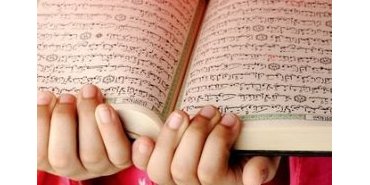Author
Jerusha Tanner Lamptey est Maître de conférence en Islamologie, théologie des religions et de théologie comparative. a l’Union Theological Seminary de New York. Elle a enseigné à l’Université de Georgetown, où elle a également obtenu son doctorat en théologie et d’études religieuses en mettant l’accent sur le pluralisme religieux catholique et dans la pensée islamique. Elle a publié plusieurs articles et contributions sur le pluralisme religieux, les relations œcuméniques, Jean-Paul II, le Concile Vatican II, et la religion traditionnelle africaine.
Presentation
How does the Qur’an depict the religious ’other’? Historically, this question has provoked extensive debate among Islamic scholars about the identity, nature, and status of the religious ’other.’ Today, this debate assumes great importance because of the pervasive experience of religious plurality, which prompts inquiry into convergences and divergences in belief and practice as well as controversy over appropriate forms of interreligious interaction. The persistence of religious violence and oppression give rise to difficult questions about the relationship between the depiction of religious ’others,’ and intolerance and oppression.
Scholars have traditionally accounted for the coexistence of religious similarity and difference by resorting to models that depict religions as isolated entities or by models that arrange religions in a static, evaluative hierarchy. In response to the limitations of this discourse, Jerusha Tanner Lamptey constructs an alternative conceptual and hermeneutical approach that draws insights from the work of Muslim women interpreters of the Qur’an, feminist theology, and semantic analysis. She employs it to re-evaluate, re-interpret, and re-envision the Qur’anic discourse on religious difference. Through a close and detailed reading of the Qur’anic text, she distinguishes between two forms of religious difference—hierarchical and lateral. She goes on to explore the complex relationality that exists among Qur’anic concepts of hierarchical religious difference and articulates a new, integrated model of religious pluralism.
Contents
Contents
Acknowledgments
Note on Transliteration, Translation and Gendered Language
Introduction
Part One: Historical and Contemporary Approaches to Religious ’Otherness’
- Chapter 1: ’Self’ and ’Other’ in Historical Islamic Discourse
- Chapter 2: Sameness and Difference in Contemporary Islamic Approaches to Religious Diversity
Part Two: Conceptual and Hermeneutical Foundations of Muslima Theology
- Chapter 3: Contemporary Muslim Women Interpreters of the Qur’an: Hermeneutical Approach and Conception of Difference
- Chapter 4: From Sexual Difference to Religious Difference: Feminist Theological Approaches to Religious Difference
- Chapter 5: From Holistic Interpretation to Relational Hermeneutics: Toshihiko Izutsu’s Semantic Analysis of the Qur’an
Part Three: A Muslima Theology of Religious Pluralism
- Chapter 6: Lateral and Hierarchical Religious Difference in the Qur’an
- Chapter 7: Relational Mapping of the Semantic Field of Taqwa: Concepts of Hierarchical Religious Difference
- Chapter 8: Never Wholly ’Other’: Sameness, Difference and Relationality
Glossary of Arabic Terms
Bibliography
Index
Index of Qur’anic Verses

